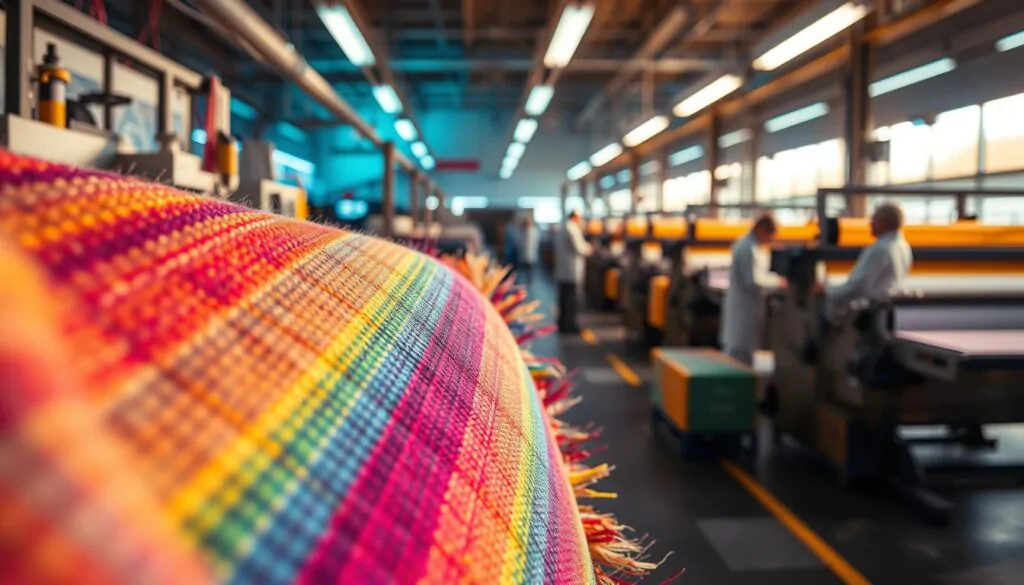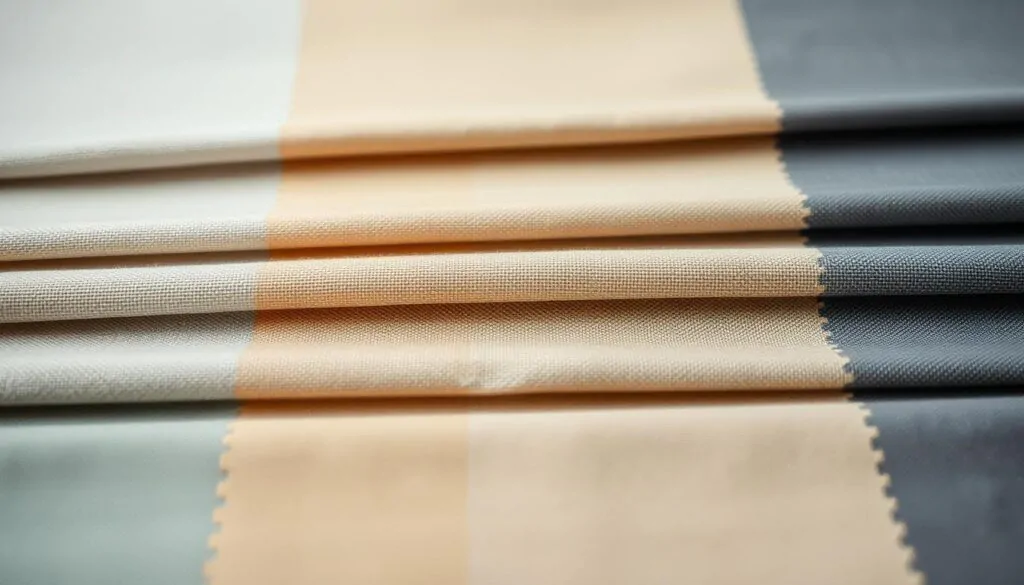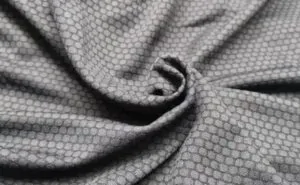Have you ever wondered why fabric color difference is so important in the textile world? I’ve seen how a small color change can make a big difference in how a product looks. Getting the color right is key, and it’s surprising how often it affects the quality of a product.
Understanding fabric color difference is crucial for those in the textile industry. It’s all about matching colors accurately.
Fabric color difference can be tough, especially when using different materials and dyes. Things like hot water, dye amounts, and mixing dyes can change the color. For example, using core Tintex dyes can create many new colors. Adjusting dye amounts can also help get the color you want.
As we dive into fabric color differences, we’ll look at what causes them, how to measure them, and how to keep colors consistent. These are all important in the textile industry.
Understanding Fabric Color Difference
Exploring fabric color differences shows it’s more than just color. It’s about the fabric types and manufacturing processes too. Good color matching needs clear talk between the client and the factory. For example, a company with 1 million customers had more returns because of color mismatches. This led to lost sales and extra costs.
Getting a fabric color right can take a few months. It’s key to think about color variations and how they affect the final product. Different fabrics soak up dye in different ways, changing how colors look. Here are some examples of fabric color combinations:
- Tone-on-tone fabrics use different shades of the same color
- Color + White fabrics mix one main color with white or cream
- Fabrics with small accents have a strong background with a few accent colors
Knowing these details helps you deal with fabric color differences better. This way, you can make smart choices for your textile projects.

The Science Behind Color Variations in Textiles
Exploring color science, I find the complexity of color changes in textiles amazing. Fabric properties, lighting, and monitor settings greatly impact color appearance. For example, color normal individuals can see over 22 million colors. But, those with dichromats color blindness might find it hard to tell some colors apart.
The science of color changes in textiles is based on color science principles. The illuminant, observer, and textile material are key factors in color specifications. Knowing these is vital for accurate color in the textile world.
Several factors influence color changes in textiles, including:
- Lighting conditions: Different lights can change how colors look in textiles.
- Fabric properties: The fabric’s texture, weave, and material affect color appearance.
- Monitor settings: Your monitor’s settings also play a role in color display, so calibrating is important.

Understanding the science behind color changes in textiles helps us appreciate the challenges and opportunities. Whether you’re a designer, maker, or just a consumer, knowing color science can guide your choices. It also lets you see the beauty of textiles in a new light.
Measuring and Evaluating Fabric Color Difference
Exploring fabric color difference shows how crucial accurate color measurement is. Always testing the color is essential before confirming a fabric order. Color measurement tools help us assess these differences precisely.
Industry standards, like those from the Textile Color Hub, are key for quality control. They help manufacturers cut down on waste and enhance color quality. For example, using inline color measurement tools can reduce waste and improve color formulation.
Quality control methods are vital for accurate color representation. Specialized spectrophotometers measure color on different surfaces. This ensures manufacturers can get color approvals faster, from weeks to days.
Accurate color measurement brings many benefits. It reduces CO2 emissions and speeds up product launches. It also ensures 95% accuracy in lab dips on the first try. By focusing on color measurement and quality control, manufacturers meet high color standards. This boosts customer satisfaction and loyalty.
Common Causes of Unwanted Color Variations
Exploring fabric production, I’ve found many reasons for unwanted color changes. Fabric defects are a big one, happening during making. Quality control is key to spotting and fixing these issues to avoid color problems.
Different fabric types also play a part. How fabrics take dye can change a lot, causing color issues. For example, the fabric’s texture and how clear it is can change how color looks. It’s important to think about these things when making fabrics to keep colors consistent.
To cut down on color issues, good quality control is essential. This means doing tests to see how well colors stay on fabrics and finding problems early. By focusing on quality control, makers can make fewer color mistakes and create fabrics that customers will love.
Managing Color Consistency in Fabric Production
Exploring fabric production, I’ve learned that color consistency is a big challenge. It involves understanding many factors, like dye lots and quality checks. Ensuring colors match means using a detailed approach for each fabric type.
Color consistency changes with fabric type. Each fabric absorbs color differently. Knowing this, makers can plan better for color management. They use quality control steps like checking reflectivity and ink types.
Some ways to manage color include:
- Dye lot management: This means each fabric batch is dyed the same color, based on a color standard from the client.
- Quality control procedures: Regular checks with tools like spectrophotometers ensure the fabric color is right.
- Color matching technologies: These use color management software and fabric profiles to keep colors consistent.
Using these methods, makers can meet color consistency standards. This reduces color errors and saves money. Good quality control also cuts waste and boosts production quality, making customers happier.
Solutions for Dealing with Color Discrepancies
I’ve worked in the textile industry and know the color discrepancy challenges. A strong color management system is key. It uses special software and hardware to keep colors accurate during production.
Other ways to tackle color issues include instrumental inspection methods. These methods measure color properties and calculate differences. Visual inspections work well too, especially with the right lighting.
Here are some strategies for managing color discrepancies in textiles:
- Implementing robust color management systems
- Using instrumental inspection methods
- Conducting visual inspections under controlled lighting conditions
- Calibrating measurement devices regularly
- Taking multiple measurements to account for color uniformity
By using these strategies, textile makers can lower color discrepancy risks. This ensures their products meet quality standards.
Conclusion: Mastering Fabric Color Management
We’ve explored the world offabric color managementin thetextile industry. We’ve learned about the science of color changes. And how to use tools and strategies forcolor consistency.
Key points include using the best tools and following strict quality checks. Always watch color changes in your production. This way, you can make your textiles better, pleasing your customers and boosting your business.
Learning about color is a journey, but it’s rewarding. By using what we’ve discussed, you can handle the textile world’s challenges. You’ll make products that always meet your brand’s quality.







